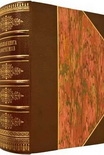Nature Noir Jordan Smith (book series for 12 year olds .TXT) 📖

- Author: Jordan Smith
Book online «Nature Noir Jordan Smith (book series for 12 year olds .TXT) 📖». Author Jordan Smith
In the end much of what is seemingly known and tamed is in fact unknown, and untamed. Even with our interventions, and now because of them, the world continues to be mysterious and accidental. There are surprises in its most compromised corners, where water is eating dams, lichens establish themselves on concrete, willows take root, and we can almost get killed in wilderness sport because someone turned off the river. It may well turn out to be a more dangerous world for all our efforts to domesticate it. We have always been the beneficiaries of nature's largesse and we take all of this for granted, as adolescents do their parents' roof over their heads, and now we want the car keys. But I, one ranger, do not.
This evening on the river was an achingly beautiful one, and not because of anything I or my species had done; I did not make the uplifting of mountains, the endless wearing-down of them by water, or the adagio of the canyon wren, nor do I want to. I, one ranger, want only for the unregulated wild that has always provided for us to outlive me and all my progeny. While it may be true that human effects are everywhere, it is a matter of degree, and we are now at a critical juncture in history when we must take great pains to ensure the survival of those landscapes and species that have not already been massively manipulated. Open land that has already been damaged, like these American River canyons, may have to be restored to membership in the unregulated wild by, for example, the removal of invasive exotic species and the reintroduction of fire to the ecosystem.
For me, the bedrock of reality is my affection for wild nature, and I take exception to the idea that nature is nothing more than a cultural construction. I do not care if some professor in some rabbit warren of a concrete university office building calls my thinking inexact and sentimental. Sentiment—call it love—for the wild is ultimately why Will and I became rangers. Sentiment is why any of us bother to raise children, who sometimes don't appreciate what we do; why we care tenderly for elderly parents after age has deprived them of the memory of our names. It is why we try to salvage the juvenile delinquent, the alcoholic, the drug addict. Without it we are not human. Perhaps these professors will say that Will and I lack critical coolness, giving our working lives to protecting something they say doesn't even exist anymore. In defense, I can only say that to favor a principle—wild, self-willed nature—with the manifest ability to create your species and support you since time immemorial, over a pipe dream of a manufactured and regulated world with no such demonstrated ability, is the most practical thing there is.
11 / Eight Mile Curve
IN THE PREDAWN DARK of a June morning in 1998, a white pickup truck with government license plates pulled onto the dirt shoulder of the Auburn—Foresthill road at a place the locals called Eight Mile Curve, within the boundaries of the land the Bureau of Reclamation had condemned for the long-awaited Auburn Dam. An unmarked government sedan was already parked there when the pickup arrived, and inside it the dark bulk of a person could be made out in the brief flash of headlights of a passing car. Someone got out and unlocked a gate. Both vehicles drove onto a dirt track inside it. The gate was relocked, and the vehicles moved off into the woods.
They had been coming there on and off for months. Sometimes what looked like a civilian vehicle met them there, or a windowless white van with government plates and no markings. But the routine was the same. In a meadow just beyond the locked gate and out of view of the road, the vehicles would stop. Four or five men would get out, greet each other quietly, and begin unloading various gear: white plastic suits and respirators, rolls of red hazard tape like the kind you see at disaster scenes, folding tables, plastic basins marked with warning stickers, bottles of chemicals with hazard markings, and plastic cases like large tackle boxes containing racks of test tubes.
Using waist-high metal stakes, the men would cordon off an area of the clearing with the red disaster tape. Inside it they'd set up the tables, cover them with sheets of disposable plastic, and arrange lab equipment along them. The van would be backed up to the cordoned-off area and its back doors opened to reveal a mobile laboratory inside, equipped with an exhaust hood for handling lethal substances.
Then the men would don their white suits. When they finished they looked like astronauts, their rubber boots carefully sealed with tape to the ankles of their suits, hands sealed in rubber gloves, heads hooded in white, and faces covered





Comments (0)